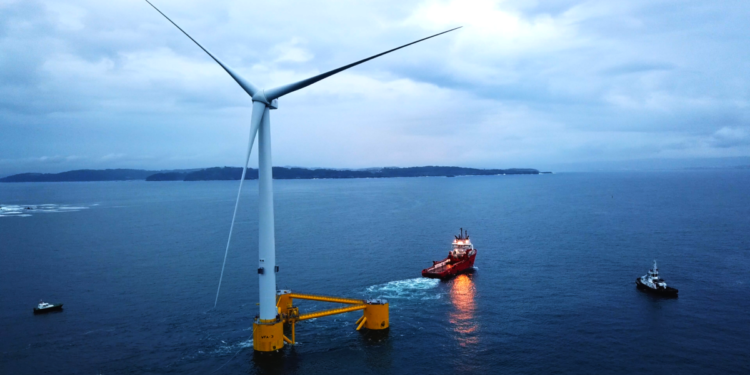Off the coast of Sicily, the largest floating wind farm in the world will be built: 190 turbines will be anchored for a total installed capacity of 2,900 megawatts.
Wind power is the future of renewable energy. And floating wind turbines are the future of wind power. This is what clearly emerges from the analysis of the investments made in recent years by the largest stakeholders in the green energy sector. A floating wind turbine is a wind turbine mounted on a floating platform (a kind of mega raft) on the water. Floating wind turbines allow the exploitation of wind energy in places that are particularly favorable from the wind point of view, but which previously could not be exploited due to the depth of the seabed. In addition to greater efficiency, floating turbines have a lower environmental impact – the seabed is not affected – and can be dismantled or moved very easily. This technology is widespread in North America but is rapidly gaining ground in our continent. The first European floating wind farm was built in the North Sea, off the coast of Scotland, while 25 kilometers off the coast of Portugal a plant capable of producing 25 megawatts of energy has been “sailing” for a few months.
Read also → Apple bets on wind power: it will build two of the largest turbines in the world
Italy: the world’s largest floating wind farm by 2025
The largest floating wind farm in the world will be built in Sicily. The project is very ambitious: 190 turbines spaced 3.5 kilometers apart will be installed with a total investment of 9 billion euros. The chosen area is located more than 60 kilometers from the Sicilian coast, halfway between Mazara del Vallo, Trapani and Tunisia. “The position – tells Riccardo Toto, general manager of Renexia, the company that presented the project – was identified because it does not hinder maritime traffic or tourism, does not disturb the migratory routes of birds as the experts with whom we are working have explained. We have also foreseen that on each platform there will be detectors of the position of cetaceans, for the collection of data that can be used for their study. We expect to start with the project with the agreement of all stakeholders.” When fully operational, this floating wind farm is expected to produce 2,900 megawatts, or enough energy for 3.4 million households, and an annual turnover of 1 billion euros. The project aims to receive the environmental impact assessment by 2023 and then be operational in a couple of years.
You might also be interested in → In China the first eco-sustainable, self-sufficient and smart city will be born.

































